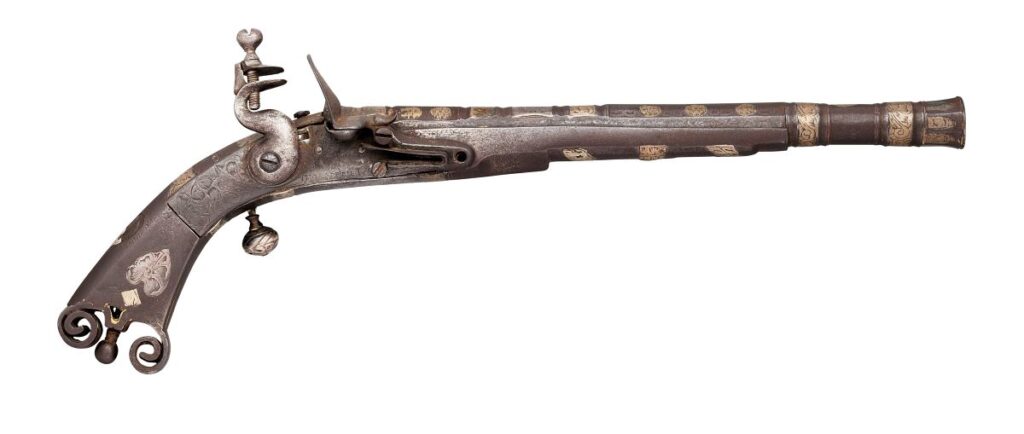
Scottish pistol said to be from Battle of Culloden could fetch £18,000 at auction
A Scottish pistol thought to have been used during the Battle of Culloden could fetch £18,000 when it goes under the hammer this month.
The steel flintlock belt pistol was likely made in Doune, Perthshire, by Thomas Caddell III during the 1700s.
It has two inscriptions, one which reads ‘Rich-Vyse-C–nt / R.D.T’, while the other says ‘Taken at the Battle of Colloden [sic]’, believed to have been added in the 19th century.
Richard Vyse was born in Lichfield, Staffordshire in 1746. His long and successful career in the army began as a cornet in the 5th Dragoons on 13 February 1762.
He then became a colonel in the army 18 November 1791, a major-general on 3 October 1794 after service overseas and rose to Commander of Forces in Scotland in 1805.
In 1804, he was elected as a Fellow of the Royal Society of Edinburgh and became a member of parliament for Beverly, the following year.
The pistol has been in the same family since the early 1960s. It was purchased as a gift for their Great Aunt, who came from Inverness and was a Passionate Jacobite.

Credit: Olympia Auctions.
She was known to display the pistol to guests, regaling them with tales of the Highland Chief who carried the weapon through the ‘45’.
The gun is being sold by her four descendants at Olympia Auctions in London on 26 June.
‘We don’t know where the pistol was purchased but research has shown that Vyse’s descendant, Sir Richard Howard-Vyse, also a famous general, died in 1962,’ said one of the relatives.
‘It may be a coincidence, but the pistol was acquired by our family in the same year. We can’t be sure, but maybe the pistol was kept in the Vyse family until then.’
Auctioneer Thomas Del Mar added: ‘In addition to being a long serving officer in the British army, who fought in Ireland and France, Richard Vyse (1746-1825) was a member of the Highland Society and elected as a Fellow of the Royal Society of Edinburgh 1804.
‘Such interests would have made this pistol of particular interest to him.
‘The Culloden inscription, added in the 19th century, was perhaps commissioned by Vyse or his descendants, unfortunately no further context survives, and we can only speculate that family tradition placed the pistol at that battle.’
Read more Culture stories here.
Subscribe to read the latest issue of Scottish Field.
TAGS

